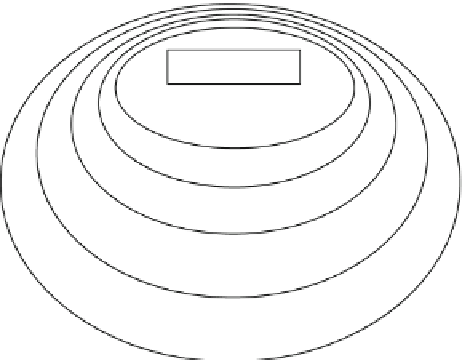Information Technology Reference
In-Depth Information
algorithm
proprietary
environment
neighbourhood
surroundings
close environment
remote environment
Fig. 3.2
The division of the environment around the agent with regard to its accessibility
In consideration of the above, we may conclude that having analysed the envi-
ronment from the point of view of a given agent it is difficult to establish which part
of the environment belongs to it completely.
Accepting the classification resulting from the division of the environment pre-
sented in Fig.
3.2
, it would refer to the whole or part of the proprietary environment
of the agent. Drawing a dividing line would distinguish part of the environment that
does not belong “completely” to the agent and the part that belongs to the agent,
which is informally referred to as its most private property.
The idea of such division of the environment seems to provide a basis for the
introduction and development of the concept of an agent. Distinguishing certain parts
of the environment and granting them an active status of having an impact on other
areas of the environment is the basis of the agent systems (or multi-agent systems).
In some considerations, the notion of an agent contains parts of the environment
which may not necessarily be the private property of the agent, therefore, we suggest
referring to that part of the environment, which is the private property of the agent,
as the
agent's mind
. Later, we will use the
agent
instead the
agent's mind
only when
it does not lead to ambiguity.
It should be emphasized that the above division is connected with that part of
the environment which was called the proprietary environment on the basis of the
previous classification. The area called the agent's mind may constitute part (or the
whole) of the environment classified as the proprietary environment from the point
of view of accessibility.


